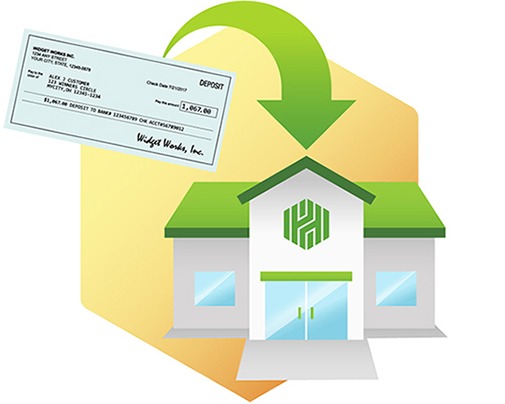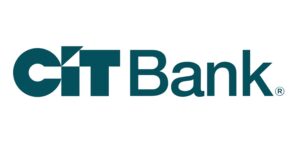 When you get a job, some may give you the option of setting up direct deposit. For those who don’t know what that is, it’s when your job directly deposits the money into your account rather than handing you a check.
When you get a job, some may give you the option of setting up direct deposit. For those who don’t know what that is, it’s when your job directly deposits the money into your account rather than handing you a check.
It helps simplify the process at work and removes the problem of you having to visit your bank to deposit your check. In this post we’ll go over how to set up direct deposit and give reasons as to why it’s wise to switch over to this method.
What is Direct Deposit?
Before we talk about how to set it up, lets go further into depth about what direct deposit is. It’s an electronic payment from one bank to another.
Direct deposit set up at work will send money from the employer’s account to the employee’s account electronically removing the need for a check. To make these transfers happen, banks use the Automated Clearing House (ACH) Network, which coordinates these payments in financial institutions.
Direct Deposits can also be set up to be automated. They’ll automatically send money to your account based on your salary or amount of hours worked. You don’t need to “accept” the payments or deposit funds into your account which you would have to do if you receive cash or checks.
This method of payment is becoming increasing in popularity exponentially. It’s becoming easier to set up and online banking is starting to become the norm. Some government jobs require their employees to set up direct deposit. Other employers may recommend and push towards direct deposit, making receiving checks difficult.

Reasons Why You Should Switch
1. Automated Deposits. The funds you receive through direct deposit are automated. It doesn’t need your confirmation and can be done completely electronically. Even if you’re out of town or out sick on payday, you’ll still receive your direct deposit.
2. No Mail or Paper. One of the biggest risks was losing your check in the mail or misplacing it. Receiving your paycheck electronically removes that risk, and payee’s no longer have to wait on their checks to come in the mail and having to go to the bank to deposit it.
3. Electronic Records. There will always be an electronic record that everyone can see. There is no need to manually write down transactions between accounts.
4. Security. With the removal of a physical check, no one can steal, alter, or attempt to cash it. The funds will move securely from one account to the other.
5. Cost. The cost of receiving a direct deposit is free, and sending payments through the ACH Network is cheaper than other options. Mailing or physically printing checks have the paper, printing, envelope, and other costs that add up.
6. Faster Pay. Direct Deposits can arrive a day or two sooner than depositing a check. Maybe some don’t need that, but to others who live paycheck to paycheck, receiving your paycheck a day or two sooner can be life changing.
Setting up Direct Deposit
In order to receive direct deposits, you will have to provide your banking information to whatever organization is paying you. Some may ask you to provide a direct deposit form while others may just ask for a voided check. You will need to provide the following information:
- Bank account number
- Routing number
- Type of account (typically a checking account)
- Bank name and address (you can use any branch of the bank or credit union you use — it doesn’t have to be your local branch)
- Name(s) of account holders listed on the account
If you’re unsure about any of this information, contact your bank or log into your account online where you can find all the required information.
Once you’ve provided the information, it could take between a couple of days to weeks to link the two accounts. Ask you employer what to expect so you don’t look in the wrong place.
To Send Payments
If you want to send direct deposits, you will first have to establish a relationship with an institution that provides ACH Payments.
Business bank accounts, popular bookkeeping services, and payroll providers may offer that service. Gather information about your payees, and include disclosures relevant to local and federal laws while setting up direct deposit.

Other Types of Payments
Direct deposit isn’t just for wages. There are many other payments that use direct deposit such as:
- Independent Contractors: If your business has hired any independent contractors (carpenters, cleaners, etc.), they can pay them through direct deposit.
- Social Security Benefits
- After 2013, its required that you set up electronic payment to receive beneficiaries via Social Security. To sign up, head to the U.S. Treasury’s Go Direct website.
- Child Support and Maintenance: To receive child support and maintenance payments electronically, contact your state’s department responsible for those payments.
- Tax Refunds: Get your money faster by signing up for direct deposit for tax refunds. Tell your accountant that you want your taxes through this method and provide your bank account information.
Bills can also be paid electronically. It’s wise to both receive and send payments as direct deposits for the same reasons; automated payments, security, cost, etc.
You can set up automated payments through your bank or through ACH payments with whoever you need to pay. For safety reasons, always be sure to check your automated payments once in a while to insure that the right amount is being paid to the right place.
 |
 |
Bottom Line
Direct deposit has become a great tool used everyone from wages, to social security and bill payments. They help reduce the risk of losing your physical checks or even theft and reduce the amount of time taken for the money to hit your account.
If you find these posts informative and would like to know any other banking tips and tools, be sure to check out our other Bank Guides! We also have posts on the best Bank Bonuses, Saving Rates and Credit Card Bonuses!




Leave a Reply